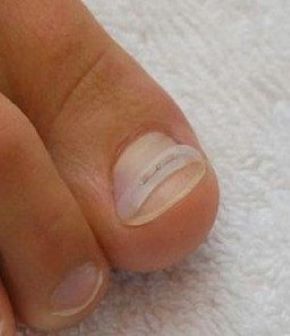What is in-toe walking?
Most adults walk with their toes pointing forward or slightly outward. Some children (and a few adults) walk with their toes pointing in: they have an in-toe(ing) walking pattern or gait.
Parents of children who in-toe often report that their children fall over more frequently than expected.
What are the causes of in-toe walking?
Two thirds of children that in-toe have an inwards twist to the top of their femur (thigh bone) at the hip. This is called femoral anteversion.
Some children may have an inwards twist to their tibia (shin bone). This is called internal tibial torsion.
In some children in-toe walking may be due to the shape their feet which are curved and tend to hook inwards. This is called metatarsus adductus.
Femoral Anteversion
We are all born with an inward twist in the femur below the hip joint. Most of us grow out of this by the age of two years.
Some children take longer and tend to walk with their knees and feet turned inwards. They often like to sit with their legs in the ‘W’ position. In the vast majority of these children, this twist in the bone gradually disappears by the age of 7-8 years.
Treatment with splints, plasters or braces does not affect it, but the doctor may advise you to discourage your child from sitting in the ‘W’ position.
In a very few children, femoral anteversion persists in the long-term. It is never a functional problem, however, and they can participate in sports or other physical activities without problems. In extremely rare cases of teenagers who have a severe twist that causes pain at the hips or knees, an operation may be considered to correct it.
Internal Tibial Torsion
In-toe walking can often be caused by an inward twist of the tibia (shin bone). This is very common in babies and toddlers and is due to ‘moulding’ of the baby during pregnancy.
It may persist for a few years but gradually disappears as the child grows. Treatment with splints, plasters or braces does not alter it and is unnecessary.
Tibial torsion does not cause any functional problems and children can participate in all physical activities without suffering any long-term problems.
Metatarsus Adductus
In-toe walking can sometimes be seen in children who have feet that are curved inwards (pigeon toes). This can also be due to ‘moulding’ during pregnancy. It is often seen in children who tend to sleep face down.
More than 80 percent of children grow out of this by the age of 3-4 years.
If the foot is supple and flexible (the doctor will check that) treatment is not necessary. In some children with more pronounced problems and feet that are less flexible, the doctor may recommend special shoes, splints to be worn at night or, rarely, treatment with plaster casts.
Very few children need an operation for their feet to be straightened. The vast majority of children with metatarsus adductus do not complain of any symptoms, can participate in all physical activities and have no long-term problems.






